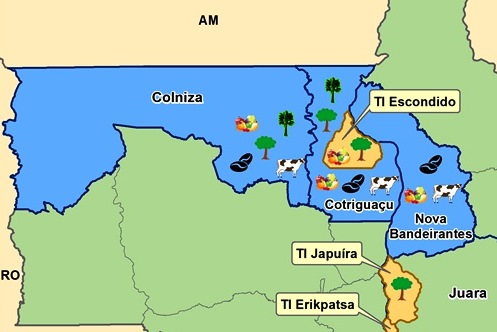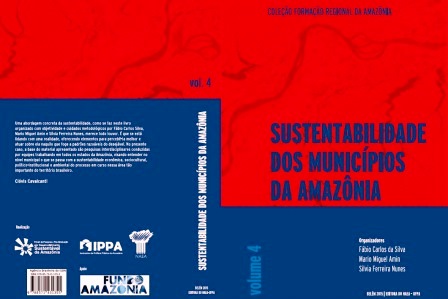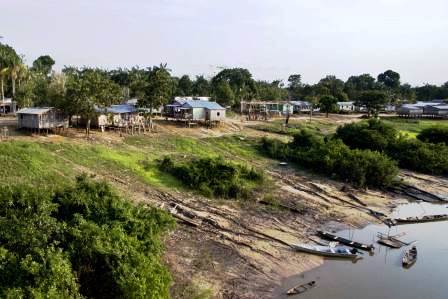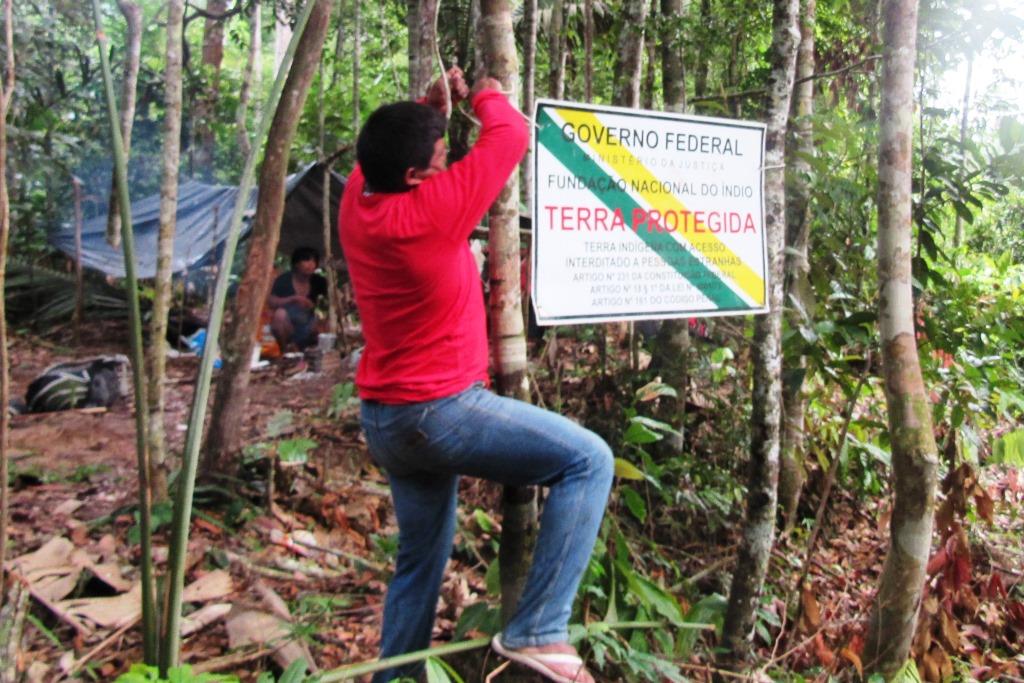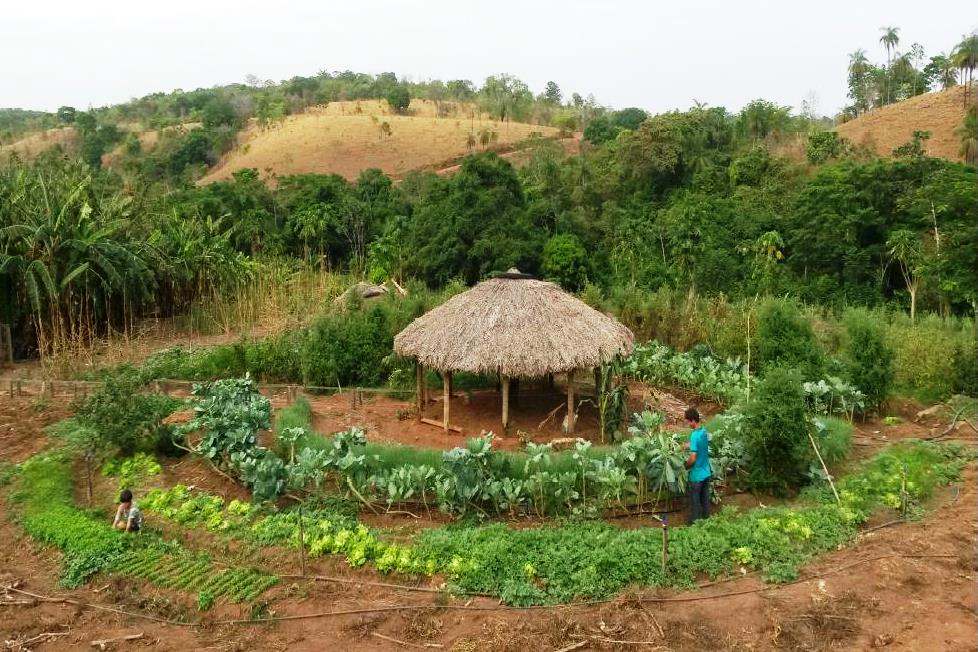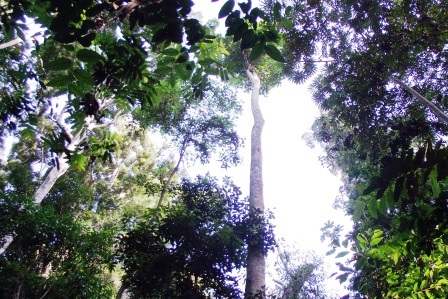Result and impact indicators
The project activities contributed to the results related to the “Sustainable Production” component (1) of the Amazon Fund Logical Framework.
The main indicators used to monitor this objective were:
- Estimated amount of the production of the Pais implemented by the project for self-consumption of the families (outcome indicator)
Target: R$ 471,900 | Final Result: R$ 1.3 million (accumulated)
- Revenue obtained from commercialization of the surplus of the Pais implemented by the project (outcome indicator)
Target: R$ 471,900 | Final Result: R$ 1.8 million (accumulated)
- Number of seedlings produced in the project (output indicator)
Target: 24,000 | Final Result: 56,318
The production and marketing indicators far exceeded the established targets. Between 2017 and 2020, the accumulated gross income reached R$ 3.1 million, of which 57% was obtained through local sales. It is also worth mentioning the result of the production of forest seedlings, more than twice the expected target. The species selected that produce fruits and oils have the potential to increase the future income of families.
- Number of rural properties with families benefited by technical assistance actions (outcome indicator)
Target: 240 | Final Result: 240
- Number of technical assistance visits carried out (output indicator)
Target: 4,320 | Final Result: 5,520
- Number of individuals participating in the technical training course, broken down by gender (output indicator)
Target: 72 | Final Result: 167 (96 men and 71 women)
- Number of individuals participating in local multiplier meetings, broken down by gender (output indicator)
Target: 48 (24 men and 24 women) | Final Result: 117 (59 men and 58 women)
- Number of individuals effectively trained using the knowledge acquired for agroecological production, broken down by gender (outcome indicator)
Target: 720 | Final Result: 1,067 (511 men and 556 women)
- Number of exchange meetings (output indicator)
Target: 2 | Final Result: 1
The set of training activities and multiplication of experiences, often a challenge in the execution of projects with great territorial dispersion, showed very robust results in relation to the targets, except for the second meeting to exchange knowledge, canceled due to the Covid-19 pandemic.
The following table shows the rate of deforestation in the last seven years in the states of Pará, Mato Grosso, Rondônia, and Tocantins, which together account on average for over 70% of the total deforestation of the Brazilian Amazon in the same period. Despite the economic dynamics and various deforestation vectors in each state, the persistence of high deforestation rates in the region reinforces the need of support, among other actions, for activities aimed at the protection and sustainable use of the forest, similar to this project.
|
Deforestation (km²)
|
2014
|
2015
|
2016
|
2017
|
2018
|
2019
|
2020
|
2021
|
|
Acre
|
309
|
264
|
372
|
257
|
444
|
682
|
706
|
871
|
|
Amazonas
|
500
|
712
|
1,129
|
1,001
|
1,045
|
1,434
|
1,512
|
2,347
|
|
Brazilian Amazon
|
5,012
|
6,207
|
7,893
|
6,947
|
7,536
|
10,129
|
10,851
|
13,235
|
|
AC and AM total (%)
|
16.1%
|
15.7%
|
19.0%
|
18.1%
|
19.8%
|
20.9%
|
20.4%
|
24.3%
|
Source: Prodes/Inpe.
Institutional and administrative aspects
Adai has established partnerships with local associations and municipalities to carry out the project. It is worth mentioning the partnership with Província Irmã Amabile Avosani (Pama), a congregation of Franciscan Nuns located in Porto Velho (RO), which provided support for commercialization of part of the production.
For project management, a local base was structured in each of the six regions covered by the project. Investments in communication equipment made to integrate the bases were fundamental in allowing continuity of the execution of activities in the midst of the Covid-19 pandemic, since routines were impacted by the adoption of remote work.
Finally, throughout the project, promotional and guidance materials were produced. The booklets and folders contain technical guidelines for the management and maintenance of the production kits and were made available on Adai´s website or partially distributed in a printed version to the communities. Much of the material was used in the fieldwork and also served as a source of consultation during the pandemic, when face-to-face meetings were reduced.
Risks and lessons learned
When executing projects of this nature, there are previously identified risks related to the vulnerability of the socioeconomic condition of families, the lack of training in sustainable production techniques or even uncertainty regarding the documentation of properties able to receive support. An example of the difficulties faced in this project
was the removal of some families from areas in which ownership of the property was questioned in the state of Tocantins which required relocation and re-installation of the production kits, without prejudice up to end of the process.
On the other hand, this same contingency represents a lesson learned since the update of the land status and registration of the properties in the Rural Environmental Registry (CAR), according to contractual requirements in the operations of the Amazon Fund, are additional benefits of the project.
The project executors reported the difficulty local environmental agencies had in issuing environmental licensing waivers and the use of water resources in small projects. This difficulty required meetings with the environmental departments to present the project and answer questions about the project.
Regarding mobilization of the families, some initial resistance was observed in the approach of concepts linked to agroecological production, in many cases due to the difficulty of understanding and implementing these new concepts. It should also be noted that the project was carried out in regions where tensions remain between the activities that promote the standing forest and those that threaten the Amazon biome.
Sustainability of results
The actions supported were focused on good safety, sustainable production, and income generation for local populations. This characteristic contributes to the result achieved being sustained over time and even expanded in the most successful cases. Overcoming the agreed upon goals in a relatively short period after execution of the project suggests that the investments and the new techniques used were well assimilated by the families. In order to geographically concentrate the programmed actions, optimize project management, and maximize the intended results, the activities were developed in a number of municipalities slightly smaller than originally planned.



